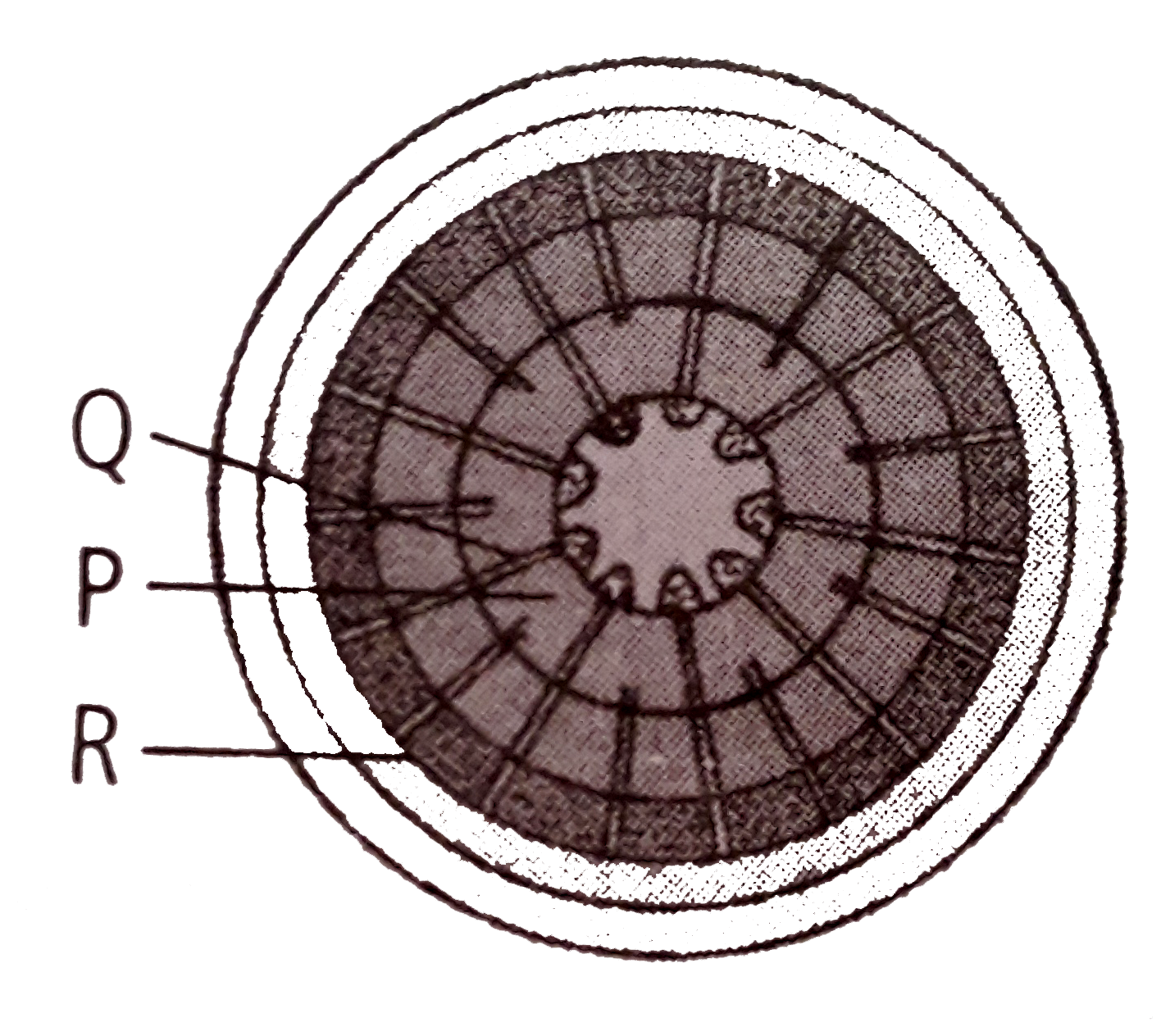vascular cambium of stem is
partly primary and secondary meristem
primary meristem
secondary meristem
intercalary meristem
The correct Answer is:A
Step-by-Step Solution:
1. Understanding Vascular Cambium:
- The vascular cambium is a type of meristematic tissue found in vascular plants. It plays a crucial role in the secondary growth of stems and roots.
2. Types of Meristems:
- There are three main types of meristems:
- Primary Meristem: Responsible for the primary growth, which increases the length of the plant.
- Secondary Meristem: Responsible for secondary growth, which increases the thickness of the plant.
- Intercalary Meristem: Found at the base of leaves or internodes, contributing to growth in certain plants.
3. Identifying the Type of Vascular Cambium:
- The vascular cambium is classified as a secondary meristem because it is involved in the secondary growth of the plant. This growth is characterized by an increase in girth.
4. Function of Vascular Cambium:
- The vascular cambium produces secondary xylem (wood) towards the inside and secondary phloem towards the outside. This process contributes to the overall growth and structural integrity of woody plants.
5. Conclusion:
- Based on the definitions and functions discussed, we conclude that the vascular cambium of the stem is a secondary meristem.
Final Answer:
The vascular cambium of the stem is a secondary meristem.
---
- The vascular cambium is a type of meristematic tissue found in vascular plants. It plays a crucial role in the secondary growth of stems and roots.
- There are three main types of meristems:
- Primary Meristem: Responsible for the primary growth, which increases the length of the plant.
- Secondary Meristem: Responsible for secondary growth, which increases the thickness of the plant.
- Intercalary Meristem: Found at the base of leaves or internodes, contributing to growth in certain plants.
- The vascular cambium is classified as a secondary meristem because it is involved in the secondary growth of the plant. This growth is characterized by an increase in girth.
- The vascular cambium produces secondary xylem (wood) towards the inside and secondary phloem towards the outside. This process contributes to the overall growth and structural integrity of woody plants.
- Based on the definitions and functions discussed, we conclude that the vascular cambium of the stem is a secondary meristem.
The vascular cambium of the stem is a secondary meristem.
Topper's Solved these Questions
Similar Questions
Knowledge Check

During the secondary growth in a dicotyledonous stem, the fusiform initials of vascular cambium give rise to which of the given labelled part?APBRCQDboth a and b
In a dicot root , vascular cambium is
View SolutionHow many of the following meristems are completely secondary in origin ?
A. Cork cambium of a dicot stem
B. Vascular cambium of a dicot stem
C. Cork cambium of a dicot root
D. Vascular cambium of a dicot root
View SolutionAssertion :- Vascular cambium of dicot stem shows dual origin.
Reason :- Partially it is made up of primary meristem and partially from secondary meristem.
View SolutionVascular cambium of the root is an example of
View SolutionIn a dicot root, vascular cambium originates from
View SolutionIn a dicot root, vascular cambium originates from
View SolutionThe vascular cambium of dicot root originates from the
View Solution
